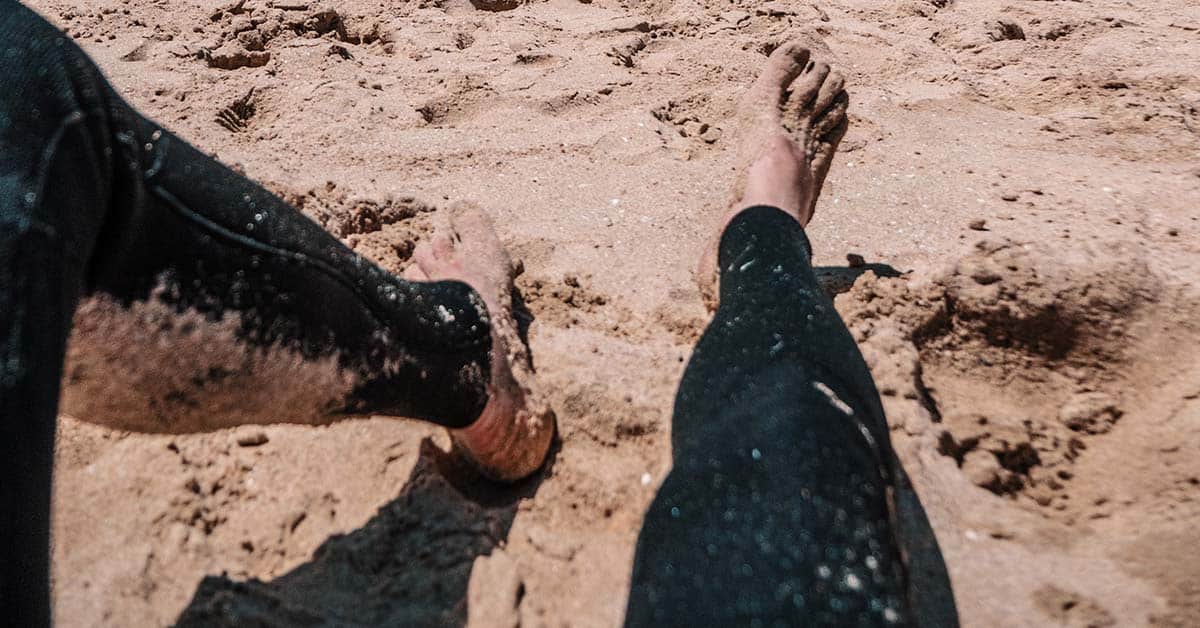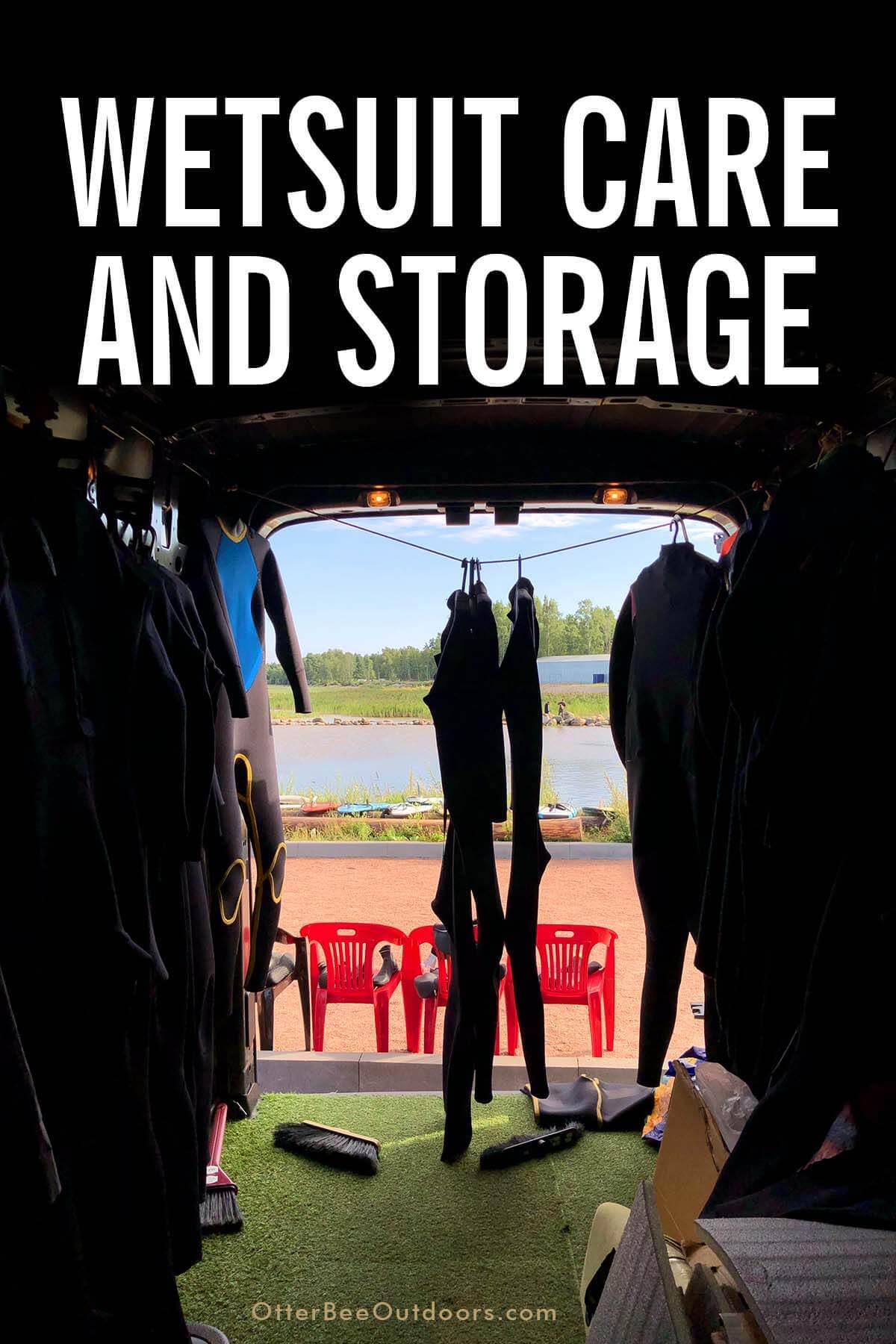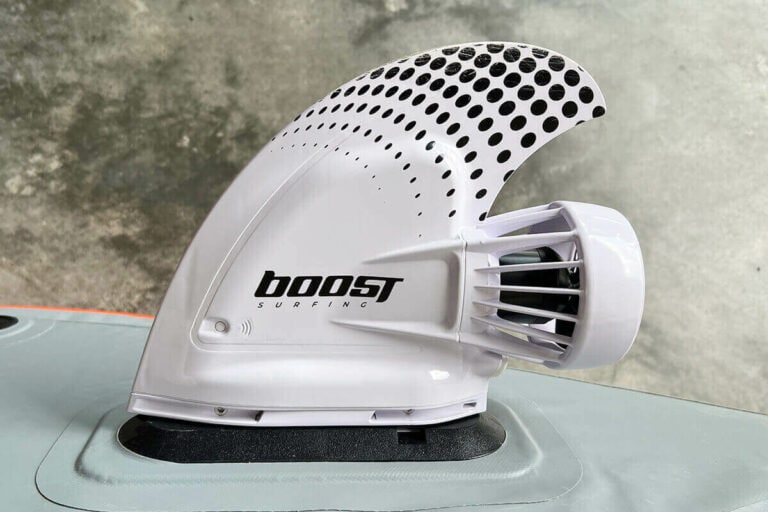Disclosure: I am compensated for purchases made through some links on this site. Click for details.
Proper care and storage of your Yulex and neoprene wetsuit will help extend its life for up to ten-plus years. But do you know how to take care of a modern wetsuit? Wetsuits have been rapidly evolving and with that comes a change in their care and storage.
Even though you’ve invested good money in your wetsuit, it’s easy to neglect wetsuit cleaning and care after a long day. Many of us neglect the proper care of our wetsuits, but we should clean and protect them so they serve their intended purpose for a long time. It’s not that difficult. It just takes some intention and a little time.
Neoprene is non-biodegradable. Even though we can recycle old wetsuits, they will eventually make it into a landfill at the end of their lifecycle. Let’s take care of our suits and prevent that from occurring prematurely.
How To Take Off Your Wetsuit
How you take off your Yulex or neoprene wetsuit is important. Take your time and don’t go crazy pulling at your tight wetsuit to get it off.
Modern wetsuit materials can be super stretchy but these materials have their limits. They can get stretched out over time and give you an improper fit or they might even tear. It’s easy to cause a fingernail tear when taking off a wetsuit improperly.
Start at your shoulders and gradually work your wetsuit off in small stages. Don’t pull the material with your fingers. This can cause a tear. Instead, slide your hand under the fabric to separate the clingy wetsuit from your skin.
If you have access to a shower or water hose, the running water greatly helps in separating the wetsuit from your skin.
Avoid Sand And Dirt When Taking Off Your Wetsuit

Getting your wetsuit covered in sand, dirt, mud, and debris when removing your suit causes extra wear on your suit, increases your future risk of wetsuit rash due to contaminants, and adds to your cleaning time. You’ll also avoid a big mess in your bathtub or wherever you clean your wetsuit.
When possible, avoid wetsuit removal while standing directly on sand, dirt, mud, or debris. Instead, stand on a wetsuit changing mat, your car mat, a towel, or in a bucket.
How To Clean Your Wetsuit
A little TLC will help keep your wetsuit fresh, clean, and free of bad smells from stagnant water to body odor to piss. The amount of cleaning needed will depend on how long your wear your wetsuit, how often you wear your wetsuit, the type of water you have been in, and what body odors are in your wetsuit.
Rinsing Your Wetsuit To Keep It Clean
At minimum, rinse off your wetsuit with fresh, clean water after each use.
If you have been using your wetsuit in fresh water that is relatively clean, you can probably get away with rinsing your suit both inside and out.
If there is a place to rinse off your wetsuit as soon as you get out of the water, do a precursory rinse to knock off grime and the funk of any ocean, lake, or river water. Your thorough rinse will come a little later.
I often kayak in murky waters where cattle commonly come to drink or cool off. If you are in murky water, salt water, pee in your suit, or have some rank body odor, do a thorough rinse within 30 minutes to remove sand and other debris then soak your wetsuit in lukewarm water for at least 30 minutes before your final rinse. Soaking will help kill bacteria and desalinate your wetsuit.
While rinsing, make sure the zippers and velcro are clear of debris and are in good working order.
Note: Don’t use hot water. Hot water can damage your Yulex or neoprene wetsuit.
Using Wetsuit Cleaner And Conditioner
To prolong the life of your Yulex or neoprene wetsuit, use a wetsuit cleaner with conditioning agents on your wetsuit after each use. Rinsing alone does not keep your wetsuit bacteria and odor-free. Wetsuit cleaner penetrates the pores of your suit to lift out salt, dirt, and funk from your body.
At minimum, you should use a wetsuit cleaner and conditioner if your suit is getting a lot of use or it is exposed to chlorine, salt water, stagnant water, or polluted water.
Though you should check the care instructions of your wetsuit and follow the steps provided by the manufacturer, the following steps cover basic cleaning for most wetsuits.
Basic Cleaning Steps For Most Wetsuits
- Check the label or product care instructions to make sure you have the correct cleaner.
- You will need a bathtub, a large utility sink, or a 5-gallon bucket.
- Rinse your wetsuit with cool to lukewarm water to knock off loose sand and dirt. Don’t use hot water. Hot water can damage your wetsuit.
- Fill your tub with cool to lukewarm water.
- Add a wetsuit cleaner like Gear Aid Revivex Wetsuit & Dry Suit Shampoo to the tub. A little cleaner can go a long way, follow the instructions. About a cap-full is all you will need.
- Open all the zippers on your wetsuit to make cleaning easier and turn your suit inside out. Unless you have been in some really nasty water, most of the bacteria will be on the inside of the suit.
- Submerge your wetsuit in the water and work the cleaner into the suit by massaging all areas thoroughly. Turn your wetsuit right side out and do the same. Each side should take 3-5 minutes.
- During the wash, look your wetsuit over for any damage that might need repair.
- Soak the wetsuit for another 20 minutes to kill bacteria and odor.
- While your wetsuit soaks work the zippers on your suit to clear them of sand and dirt then use a soft toothbrush on the zippers and velcro.
- Drain the soapy water from the tub and rinse the cleaner off your wetsuit.
- Hang your wetsuit up to dry.
How To Hang Your Wetsuit To Dry
- Turn your wetsuit inside out and leave all the zippers open for ventilation.
- Hang it on a wetsuit hanger out of direct sunlight and away from any heat source.
- Once the inside is dry, turn it right side out and hang it until dry.
- Make any repairs found when cleaning your wetsuit.
- Apply zipper lubricant.
- Store your wetsuit.
Use A Wetsuit Hanger To Dry Your Wetsuit
Don’t use a regular hanger! It’s best to use a specially designed wetsuit hanger to protect the shoulders of your wetsuit and prevent pulling.
There are two types of wetsuit hangers to consider:
- A wetsuit hanger designed to protect the suit when it is hung by the shoulders. Do not hang a high elasticity wetsuit by the shoulders. The weight of a waterlogged wetsuit will pull at the shoulders and can eventually stretch your suit out of shape and reduce its life.
- A wetsuit hanger where the waist of the wetsuit drapes over the specially designed hanger. Out of the two, this hanger is least likely to cause damage.
You could also use a very thick hanger, or tape multiple hangers together. But why spend $25 on a specially designed wetsuit hanger that is designed to protect your investment?
How To Deodorize A Wetsuit
Cleaning your wetsuit with cleaner and conditioner will typically get rid of any funky wetsuit smells. If your wetsuit still stinks after a good cleaning, try using a deodorizer like Gear Aid ReviveX Odor Eliminator.
Deodorizers can get the odors out of smelly wetsuits, neoprene gloves, booties, hoods, drysuits, PFDs, footwear, tents, backpack, bivy sacks, and other gear harboring mold, mildew, and bacteria. In a single 5-minute application, the biodegradable ReviveX solution penetrates the pores of fabric, rubber, and hard surfaces to eliminate odor naturally.
Wetsuit Zipper Care And Maintenance

Keep your wetsuit zippers opening and closing with ease. Using an all-in-one zipper lubricant and cleaner designed for wetsuits can prevent broken zippers, costly repairs, or worse yet, the need for a new wetsuit.
To clean and lubricate your wetsuit zipper:
- Remove salt, sand, and debris from the zipper with a soft bristle brush.
- Apply an all-in-one wetsuit zipper cleaner and lubricant.
- Carefully open and close the wetsuit zipper to distribute the cleaner/lubricant. This will also loosen poor-functioning zippers and get them working properly.
Gear Aid Zipper Cleaner and Lubricant is ideal. This silicone-free and paraffin-free product cleans the zipper’s teeth and leaves a protective lubricant that doesn’t collect dirt.
How To Repair Your Wetsuit
Wetsuit repairs should be made after cleaning and drying your wetsuit. Repairs made to clean suits will hold up better.
When making repairs, check out these industry-leading Gear Aid products:
- Gear Aid Aquaseal FD Adhesive with Cure Accelerator is a flexible, urethane repair adhesive that creates a permanent, waterproof seal that will flex with your wetsuit and stand up to any wear and tear. This repair product allows you to repair tears, rips, holes, and scuffs easily.
- Gear Aid Tenacious Tape Neoprene Patch can extend the life of your wetsuit. Easily fix rips, holes, tears, scuffs, and reinforce seams and high-wear areas on your suit. This neoprene patch comfortably stretches with your wetsuit and its special lining gives your suit extra abrasion resistance.
Repairing your wetsuit will increase the life of your wetsuit and prevent you from having to recycle your wetsuit before its time.
How To Store Your Wetsuit
Proper storage of your wetsuit will prevent wrinkles, creases, and damage to the Yulex or neoprene and its seams, thus prolonging the life of your suit.
- Your wetsuit should be thoroughly cleaned and completely dried if you are storing your suit till next season. A rinse is adequate if it is being stored for a short period of time.
- Store your wetsuit right side out on the same wetsuit hanger you used to dry your suit and hang it in a cool, dry, climate-controlled place out of direct sunlight. It’s best to hang your wetsuit at the waist to avoid stretching out the shoulders and neck.
- Or you can store your wetsuit flat but that takes up a lot of room.
- Don’t fold your suit to store it. This can cause permanent creasing and damage.
How To Fold And Pack A Wetsuit
When packing your wetsuit for a trip to the water, loosely fold it and place it on top of other items in your dry bag or dive bag so the suit doesn’t get crushed or creased. To prevent damage, unfold and hang your wetsuit back on a wetsuit hanger as soon as possible.
Yulex and neoprene wetsuits have foamed material with tiny bubbles that can be compromised over time when compressed. This will reduce your wetsuit’s ability to keep you warm.
How To Fold A Wetsuit:
- Start with your wetsuit lying face down on a flat surface.
- Fold the arms across the back making an X.
- Then fold the legs upward at the knee.
- And the last fold is backward at the waist.
- If you need to make it smaller, you can fold it in half again.
- To prevent damage, unfold and hang your wetsuit back on a wetsuit hanger as soon as possible.
How To Dispose Of Your Wetsuit
We don’t often think of the disposal of our wetsuits as a point of care. But we do need to be environmentally conscious. Don’t let your non-biodegradable wetsuit end up in a landfill. Dispose of your wetsuit in a responsible way.
If your wetsuit still has some life left, it can be sold, donated to a charity, or possibly traded in for a discount.
If your wetsuit has seen its day, your can recycle or upcycle your wetsuit.
For more on these wetsuit disposal options, see my article “Can Neoprene Be Recycled?“
Don’t Do This To Your Wetsuit
There are some things you should never do to a wetsuit. By avoiding these you will extend the life of your suit and ensure your comfort.
- Don’t take off your wetsuit while standing directly on hard or rough surfaces like rocks, pavement, cement, or wooden walks. Rough surfaces can damage your wetsuit.
- Do not ball up your wetsuit and leave it for its next use. Bacteria and mildew will grow and so will the smell. And the creases from wadding will damage your wetsuit.
- Always use a wetsuit cleaner and conditioner. Do not use household laundry detergents, soaps, bleach, cleaners, or fragrances.
- Do not use a washing machine and dryer to clean and dry your wetsuit. Your suit should be handled gently and hung to dry.
- Do not subject your wetsuit to hot water. Cool to lukewarm water should be used to rinse and clean your suit.
- Never dry or leave your wetsuit in the sunlight. The sun causes UV degradation.
- Never dry or leave your wetsuit near a heat source.
- Do not scrub your wetsuit. Massage it gently when washing and rinsing. Scrubbing your wetsuit to remove sand, dirt, and wax will cause damage.
- Do not leave your wetsuit folded for an extended time. It should be hung on a wetsuit hanger or laid flat.
- Avoid folding wetsuit zippers.
- Always store your wetsuit in a temperature-controlled environment never in an attic, garage, shed, or another spot where it might be exposed to extreme temperatures, humidity, or moisture. Doing so will damage wetsuit fabrics and seams and promote the growth of mold and mildew.
- Do not leave your wetsuit in your hot car for extended periods of time.
- Don’t ever use a wire hanger when drying or storing your wetsuit. Narrow hangers can permanently damage your suit. Stick with specially designed wetsuit hangers.







